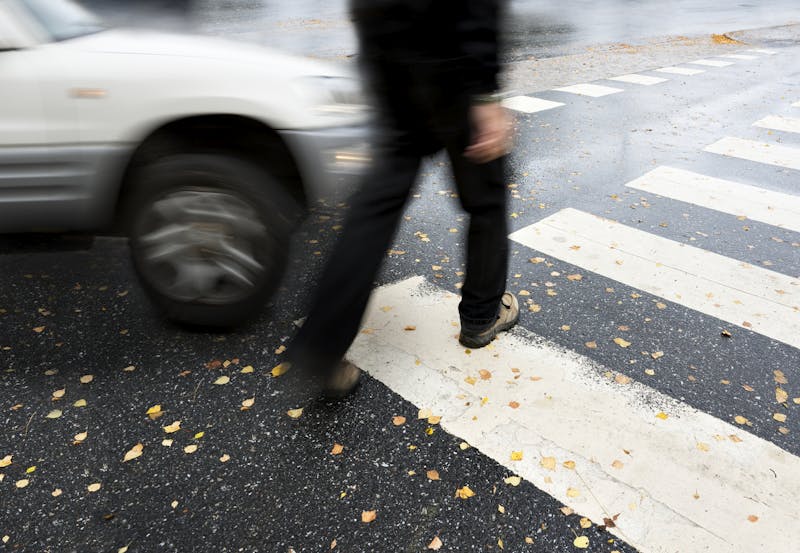The Growing Concern of Pedestrian Fatalities in Texas
As daylight saving time ends and Texas roads become riskier for pedestrians, the Texas Department of Transportation (TxDOT) has launched the "Be Safe. Drive Smart" campaign to reduce the rising number of pedestrian fatalities across the state. This initiative responds to alarming data showing that pedestrian accidents tend to spike during low-light hours following the daylight saving shift. In 2023, the state reported 5,921 pedestrian-related crashes that resulted in 807 fatalities¹. Cities like Dallas have been particularly affected, with 661 injuries and 69 fatalities, reflecting a 4.2% increase compared to the previous year². This data clearly demonstrates the dire need to educate individuals on the precautions and programs that bring awareness to road safety. In support of the TxDOT campaign, the City of Dallas has dedicated $27 million to pedestrian safety initiatives to help create a safer environment for everyone. By raising awareness of traffic safety measures, TxDOT hopes to inspire drivers and pedestrians to adopt safety practices that help prevent accidents.
The Impact of Daylight Saving Time on Road Safety
As daylight saving time ends, adjusting to darker early evenings can be difficult and especially dangerous for road users. Research shows that pedestrian fatalities increased by 30% in the weeks following the time change, primarily due to decreased visibility during evening hours³. Reduced visibility in low-light settings makes it objectively more challenging for drivers to spot pedestrians, especially on roads lacking proper street lighting.
TxDOT's campaign emphasizes the importance of practicing hypervigilance and taking preventive measures during these hazardous months. TxDOT urges both drivers and pedestrians to consider their safety tips when driving in the dark. For example, drivers are advised to slow down and ensure their headlights are on during evening hours. Pedestrians can increase visibility by wearing reflective clothing or carrying a source of light when walking in low-light conditions.
The Lisa Torry Smith Act and Pedestrian Protection
The Lisa Torry Smith Act was passed in 2021 after a Texas mother was hit by a car while she was walking her son to school. This legislation mandates that drivers yield to pedestrians and cyclists at crosswalks and establishes clear legal accountability for drivers who fail to do so⁴. However, despite the law's significance, many Texans remain unaware of the new regulations. TxDOT's initiative educates drivers and pedestrians about the importance of this law, making Texans more informed about their rights and responsibilities on the road. The Lisa Torry Smith Act, along with TxDOT's campaign, represents a growing commitment to community safety programs that result in mutual responsibility between drivers and pedestrians.
A Safer Community Through Responsible Practices
The "Be Safe. Drive Smart" campaign encourages Texans to adopt mindful practices that enhance road safety and reduce accident risks. Drivers are urged to lower speeds, particularly in residential areas and near schools, and to eliminate distractions like phone use. The campaign also advises drivers to be extra cautious at crosswalks, yield to pedestrians, and use headlights effectively during low-light hours.
Pedestrians can also take several steps to increase visibility and safety. Wearing reflective gear, carrying a flashlight, and staying alert by avoiding distractions are key preventive measures. Making eye contact with drivers before crossing the street and using marked crosswalks can help ensure that drivers see pedestrians before they step onto the road. The campaign promotes these habits to foster a culture of mutual responsibility and awareness, which can significantly improve pedestrian safety across the state.
Essential Safety Tips for Texans
Specific safety tips recommended by TxDOT to support the Be Safe. Drive Smart campaign include:
For Drivers:
- Reduce Speed: Drive at or below the posted speed limit, especially in residential areas and near schools.
- Stay Alert: Avoid distractions like phone use, focusing entirely on the road and surroundings.
- Be Cautious at Crosswalks: Watch for pedestrians and yield to them at crosswalks, as required by the Lisa Torry Smith Act.
- Use Headlights Properly: Turn on headlights during low-light hours to improve visibility.
For Pedestrians:
- Wear Reflective Gear: Wearing reflective clothing or accessories when walking at night or early in the morning can increase pedestrian visibility.
- Carry a Light Source: Consider carrying a flashlight or other light-up accessory to be more noticeable to drivers.
- Cross Safely: Use marked crosswalks and look both ways before stepping onto the street.
- Stay Aware: To remain alert to surroundings, avoid distractions like headphones or phone use.
- Make Eye Contact with Drivers: Make direct eye contact with drivers before crossing the street.
Seasonal Traffic Patterns and Community Engagement
The change in daylight saving time coincides with the beginning of seasonal traffic patterns that can further increase accident risks. During colder months and holiday periods, traffic volumes rise, putting both pedestrians and drivers at greater risk. Fall driving safety practices, such as maintaining safe speeds and ensuring clear visibility, become especially relevant as roads become busier. The campaign highlights how community engagement plays a crucial role in creating safer streets. By participating in road safety initiatives and following traffic safety awareness guidelines, local communities can work together to reduce preventable accidents. With Texas ranking among the highest in the U.S. for pedestrian fatalities, addressing the seasonal risks associated with daylight saving time is more critical than ever—the Be Safe. Drive Smart campaign focuses on raising awareness around these heightened dangers and the additional protections offered by pedestrian safety laws⁵.
By bringing attention to traffic safety issues and providing actionable safety tips, TxDOT encourages Texans to take an active role in reducing pedestrian-related accidents. Traffic safety experts emphasize the importance of nighttime driving safety and suggest that ongoing community safety programs can help reduce pedestrian fatalities across the state. By adopting safe practices and supporting local initiatives, Texans have the opportunity to make streets safer for everyone, particularly during the darker months ahead.
References
¹ Texas Department of Transportation. (2024). Be Safe. Drive Smart campaign targets pedestrian safety. Retrieved from https://www.txdot.gov
² Dallas Express. (2024). City reports rise in pedestrian fatalities. Retrieved from https://www.dallasexpress.com
³ Zong, R., Lee, C., & Mueller, M. (2022). Effects of daylight saving time on pedestrian fatalities: A multi-state analysis. Journal of Traffic and Transportation Engineering, 9(4), 215-223.
⁴ Texas State Legislature. (2021). Lisa Torry Smith Act. Retrieved from https://www.capitol.texas.gov
⁵ National Highway Traffic Safety Administration. (2023). Traffic safety facts annual report. U.S. Department of Transportation. Retrieved from https://www.nhtsa.gov


